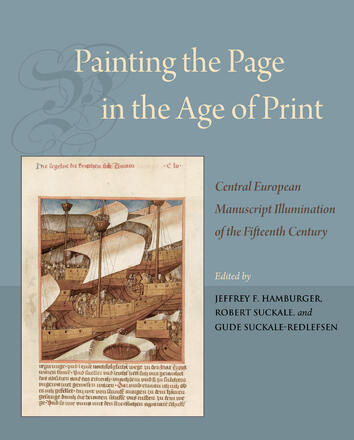
Painting the Page in the Age of Print
Central European Manuscript Illumination of the Fifteenth Century
Description
The history of the book in the late Middle Ages is associated especially with Gutenberg's momentous invention of printing with movable type. Printing, however, hardly replaced the manuscript book overnight; in respect to content, materials, format, decoration, dissemination, and technique, the fifteenth century in German-speaking lands witnessed an extraordinary range of innovation and experimentation. Nonetheless, over a century of scholarship has tended to dismiss the illuminated manuscripts produced in central Europe between 1400 and the Reformation, the vast majority of them unknown beyond a small group of specialists, as mediocre manifestations of a culture in decline. This book -- originally published in German to accompany a series of exhibitions in Germany, Austria, and Switzerland from 2015 to 2017 -- was written to challenge these prejudices and the weight of tradition they represent. It contains four wide-ranging essays that for the first time give an overview of fifteenth-century illumination in central Europe, from the overweening luxury of the manuscripts produced at the court of Wenzel IV in Prague in the late fourteenth century to the classical texts illuminated in the context of northern European humanism in the early sixteenth century. After an introduction that considers issues of politics and patronage as well as changing patterns of production, the second chapter focuses on religious manuscripts, both those for ecclesiastical institutions as well as those for private individuals, and the third on secular manuscripts ranging from works of high literature to practical texts on such topics as alchemy and astrology, cartography and travel, civic and regional history, medicine, and law. A final chapter considers the role of illumination in the decoration of the Gutenberg Bible and, consequently, in the emergence of novel approaches to book design and the dissemination of information in the latter half of the fifteenth century.
Reviews
"Painting the Page in the Age of Print is an English edition of a volume published to accompany a ground-breaking series of exhibitions of illuminated manuscripts from central Europe. Written by a quartet of senior scholars with unparalleled knowledge of the diversity, the creativity, and the full aesthetic range of illuminated manuscripts produced in German-speaking regions during the late Middle Ages, it offers an essential introduction to the complex social, political, and artistic settings in which these manuscripts were fashioned. The book's many color illustrations, of both familiar and little-known examples, and its texts, provide readers with new understanding of the movements of artists and the transmission of artistic styles across wide areas, and of the aesthetic creativity and exuberance of manuscripts that intermix old and new techniques and traditions. Painting the Page will be essential reading for all those interested in the roles of patrons, books, and book design in shaping the cultural history of late medieval Europe." -- James H. Marrow, Princeton University